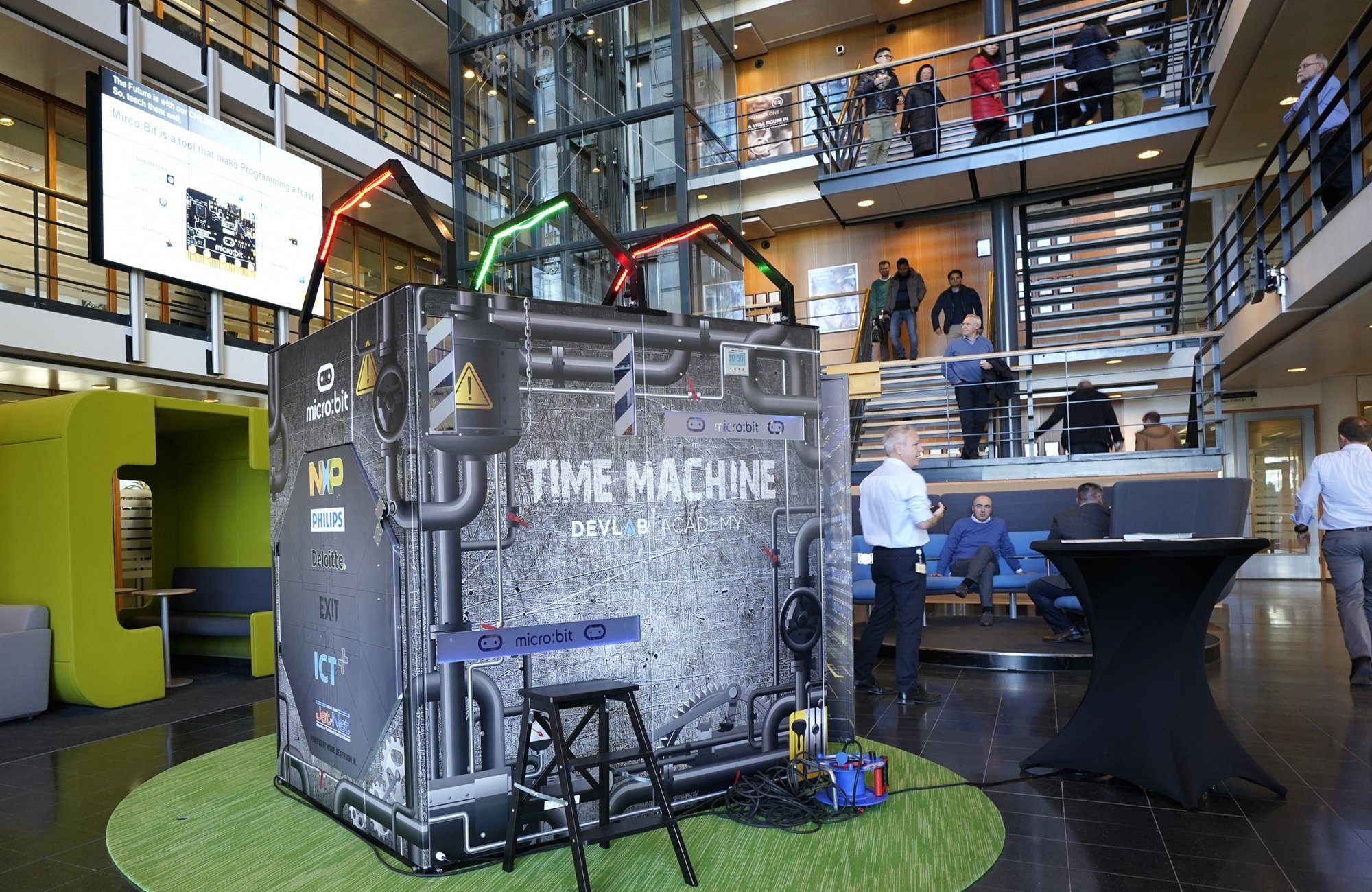
The Eindhoven Maker Faire is a celebration of Eindhoven’s maker culture. On 29 and 30 September you can build gliders, weave carpets and make your own 3D printed robots. And program yourself out of an escape room. Lex van Gijsel tells us how (and why).
If you’ve never tried it, how can you choose it? It is exactly this what motivates Lex van Gijsel to introduce children to programming. He is part of a worldwide BBC project and always looking for ways to gain more attention for kids and programming. One way is the mobile escape room he developed. It will be one of the highlights of the Eindhoven Maker Faire this weekend.
‘Here it is’, says Lex van Gijsel showing a printed circuit board (PCB) covered with buttons and sensors. We are meeting the man behind the mobile escape room to learn more about his latest work. But Van Gijsel’s story actually starts in 2016 when he accidentally comes to know about a highly ambitious BBC project.
Together with 29 partners (including Freescale, which later got acquired by NXP), the BBC is developing a micro-computer to introduce children to programming. With this micro:bit you can easily make a pedometer or build your own musical instrument that reacts to light. It is really very simple, emphasizes van Gijsel. ‘It won’t take you more than fifteen minutes to understand how it works.’
Super simple
With his foundation DevLab Academy he is the official Dutch partner of the Micro:bit Educational Foundation, born out of the BBC project. His local partners include NXP, Deloitte and ICT Group. He also works closely with the Fontys teacher training college.
 The micro:bit is designed in such a way that as few children as possible will quit frustratedly because they get stuck during programming. The result is a super simple PCB with control buttons and a 5×5 LED matrix ‘screen’. With simplified programming languages (for example with blocks that you can slide) you can let lights light up or play with the other sensors. The micro:bit can also communicate wirelessly with other micro:bits, smartphones and tablets. The technology is fully visible on the back of the device.
The micro:bit is designed in such a way that as few children as possible will quit frustratedly because they get stuck during programming. The result is a super simple PCB with control buttons and a 5×5 LED matrix ‘screen’. With simplified programming languages (for example with blocks that you can slide) you can let lights light up or play with the other sensors. The micro:bit can also communicate wirelessly with other micro:bits, smartphones and tablets. The technology is fully visible on the back of the device.
Twenty euros
In England about 800,000 children now have a micro:bit, an incredible number compared to the Netherlands. Nevertheless, Van Gijsel is happy that over de last 1,5 years more than twelve hundred boys and girls have experimented with the micro:bit, which is for sale for about twenty euros. He agrees that it sometimes takes a while to win teachers for the project. Lack of time and extra costs are always lurking. But of all the schools that have participated so far, almost everyone continues.
Escape room
To draw more attention to the micro:bit, last year Van Gijsel developed a mobile escape room in collaboration with NXP, among others, which he wants to use at events such as the Eindhoven Maker Faire. The escape room is designed as a time machine of one and a half by two meters in which different micro:bits are processed. With two to four people you start the game. Once inside you’ll be told that you’ve ended up in the wrong year and how to get back into the present through six assignments. Van Gijsel explains: ‘Anyone over the age of eleven can try it. Experience in programming is absolutely not necessary. By doing the assignments you’ll learn step-by-step what programming means.’
Van Gijsel: ‘Programming skills help you to develop a certain way of thinking, to understand and recognise logical steps: if I do this, then that happens. But it’s also the fun of creating. What can you make with just a few chips and some sensors? He shows a video of a girl who used a micro:bit to provide her self made unicorn with flashing lights. It looks so fancy and wow: this was created by a kid who is only eleven years old.
He looks optimistic: ‘Over the years we have become more and more the users of computers and no longer the makers of them. I want to turn the tide.’
You can find the DevLab Academy Escape Room this weekend in the Klokgebouw at Strijp-S.


